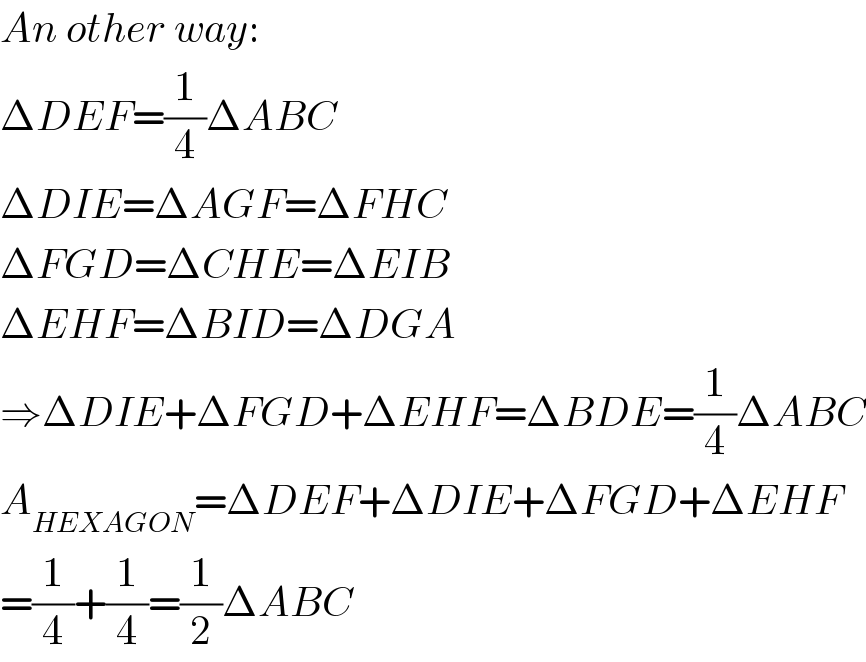
Question and Answers Forum
Question Number 25605 by behi.8.3.4.17@gmail.com last updated on 11/Dec/17

Commented by behi.8.3.4.17@gmail.com last updated on 12/Dec/17

Commented by ajfour last updated on 12/Dec/17

Commented by ajfour last updated on 12/Dec/17
![△ABC=(1/2)(2a)(2c)=2ac △DEF=(1/4)(△ABC)=((ac)/2) △DGF=(1/2)×FM×(MD−GM) =(1/2)×b×(c−(b/(tan C)) )=(b/2)[c−((b(a−b))/c)] =((b(c^2 +b^2 −ab))/(2c)) . △FEB=(1/2)×NF×(EN−IN) =(1/2)(a−b)[c−((a−b)/(tan B))] =(1/2)(a−b)[c−(((a−b)b)/c)] =(((a−b)(c^2 +b^2 −ab))/(2c)) . and y(tan B+tan C)=a ⇒ y=(a/(((c/b)+(c/(a−b))))) =((b(a−b))/c) △HED=(1/2)×a×y =((ab(a−b))/(2c)) Area(hexagon)=Ar(△DEF)+ Ar(△DGF)+Ar(△FEB)+ Ar(△HED) =((ac)/2)+(b/(2c))(c^2 +b^2 −ab)+ (((a−b)(c^2 +b^2 −ab))/(2c))+((ab(a−b))/(2c)) =((ac)/2)+(((c^2 +b^2 −ab)a)/(2c))+(((ab−b^2 )a)/(2c)) =(a/(2c))(c^2 +c^2 ) =ac so ((Ar(hexagon))/(Ar(△ABC)))=((ac)/(2ac)) =(1/2) .](Q25643.png)
Commented by behi.8.3.4.17@gmail.com last updated on 12/Dec/17

Answered by mrW1 last updated on 12/Dec/17

Commented by mrW1 last updated on 12/Dec/17

Commented by ajfour last updated on 12/Dec/17

Commented by behi.8.3.4.17@gmail.com last updated on 12/Dec/17

